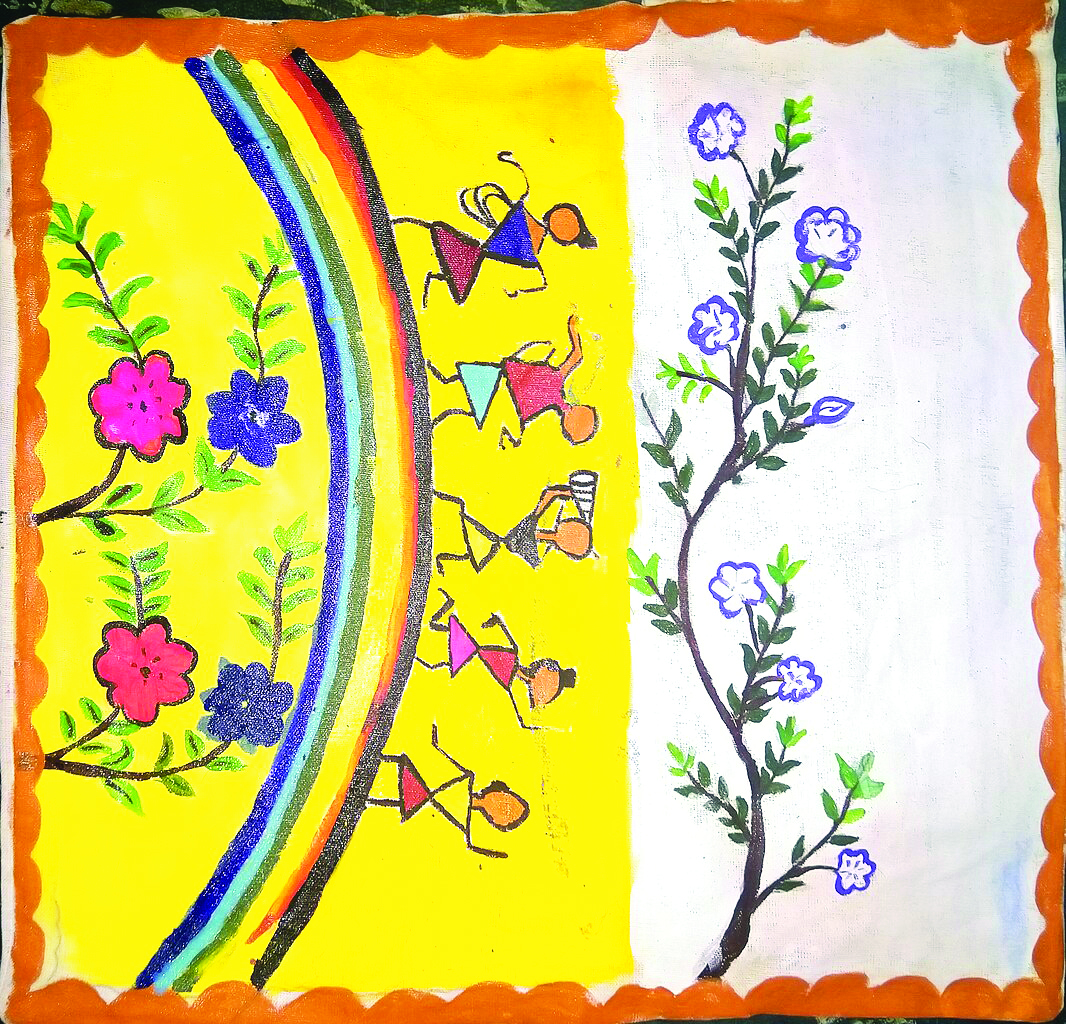Warli paintings: An art of transcribing life
Stepping out of the confines of traditional wall painting, the art of the Warli tribes has found diversified usage and contemporary flavour without compromising with its essentials; but for the tribal artists, it is still a form of ‘writing’

From the corporate office of the National Fertilizers Ltd. (NFL) at Mumbai to Corporate Social Responsibility (CSR) projects of Larsen & Toubro India (L&TI), social outreach by United Nations Development Programme (UNDP) and Tata Steel to the frescoes on the walls of Lodhi colony in the New Delhi Municipal Corporation (NDMC) area, the Warli art is making its presence felt quite visibly, as well as metaphorically!
What was earlier confined to traditional wall paintings by the Warli tribals in select districts of Maharashtra, Gujarat and the UTs of Dadra & Nagar Haveli and Daman has now entered the world of greeting cards, posters, books, wallpapers, stationery items, picture frames, wooden items, decoratives, hangings, furniture, fabrics, apparels, banners, curtains, covers and floorings. The GI application was made, and received by the Adivasi Yuva Seva Sangh of Thane, giving further impetus to this art form.
The first textual references to this craft are seen in the despatches of Megasthenes (3rd century BCE) when he came as the Greek ambassador to the court of Chandragupta Maurya. His writings make a mention of the area called Varalat around present-day Dharampur in Thane district. Many scholars subscribe to the view that this is the original home of the Warlis. This association goes back to at least 2,300 years if not more. It has also ben averred that these mural paintings are similar to those done between 500 and 10,000 BCE in the Rock Shelters of Bhimbetka, Madhya Pradesh
According to Dr Wilson, the word Warli comes from ‘Varal’, a small patch of cultivated land. According to the Thane Gazetteer, Warlis have three divisions: Murdes, Davars and Niharis, but in their own imagination, they also add Dongar Warlis, Ghat Warlis, Pathar Warlis, Malhar Warlis, Kokani Warlis, Zanjare Warlis and Pawar Warlis, thereby suggesting that there were ten connected clans spread over Thane, Nashik and districts adjoining Mumbai (in Maharashtra) as well as Valsad, Wansda, Dharampur, and Dang in Gujarat besides Daman and Dadara and Nagar Haveli. According to the report on the status of scheduled tribes annexed to the 1961 census, their art is a vivid expression of the daily and social life of the tribal people.
Warli murals are sketched using the basics of geometry with circles symbolising the Sun and the Moon, triangle for mountains, and squares/rectangles (also known as Chauk) for an enclosure or closed area. Inside the ‘chauk’, we find Palaghata, the mother goddess, symbolising fertility. Humans are represented by two triangles one above the other — the upper one being inverted. Though geometrical shapes are used in this, there is no prior sketching or measurement. The use of colours is also minimal. The background is often austere brown, or the colour of gobar. The cow dung mixture is called shen – and it is the filtered extract of cow dung mixed with sufficient water to form a homogeneous paste. Red comes from Geru / Lal Mati. The white is obtained by grinding powder from soaked rice and is called Pitha cha Rang. The actual act of painting is done by using a Bamboo stick crushed at one end to form a brush called Salatichi Kaadi. Three other terms are important:
Lipane: It stands for smoothening the surface and preparing it for Sarvane;
Sarvane: Coating the wall with cow dung paste;
Lihane: The act of painting with a bamboo stick.
As they did not have a script, all the creative expressions to commemorate rites of passage – the birth of a child, the moment to mark completion of five years, celebrating the menstrual cycle, nuptials, childbirth, and of course death — as well as festivals heralding the onset of spring, rain, and harvest season were depicted. Their deities - Bhagat, Dhavaleri, Savasi, Suyin - are also represented through these paintings, which ensure an inter-generational connection among the members of the tribe and connect them with their clansmen across the wide geography in which the Warlis are spread.
Thanks to the GI, the members of the community have retained their ‘hold’ over the craft, and even as they are giving a contemporary idiom to this expression, the essentials have not been compromised. The patronage by corporate clients has indeed been of great help because many cafes, boutique hotels, and RWAs are now looking out for them.
But it should always be remembered that, for its adherents and proponents, it is more a script than a painting. The Vayeda brothers – Mayur and Tushar — who painted the wall on Lodhi Road, call it Warli ‘writing’ instead of ‘painting’. “It is because we speak in the Warli language, but we don’t have a written script. So, everything about the rituals, paintings, and other important things of the tribe is only oral. We express all these stories, folks, religion, and daily life rituals through the painting,” they said.
The writer superannuated as the Director of the LBSNAA after 36 years in the IAS, and is currently a historian and policy analyst.



